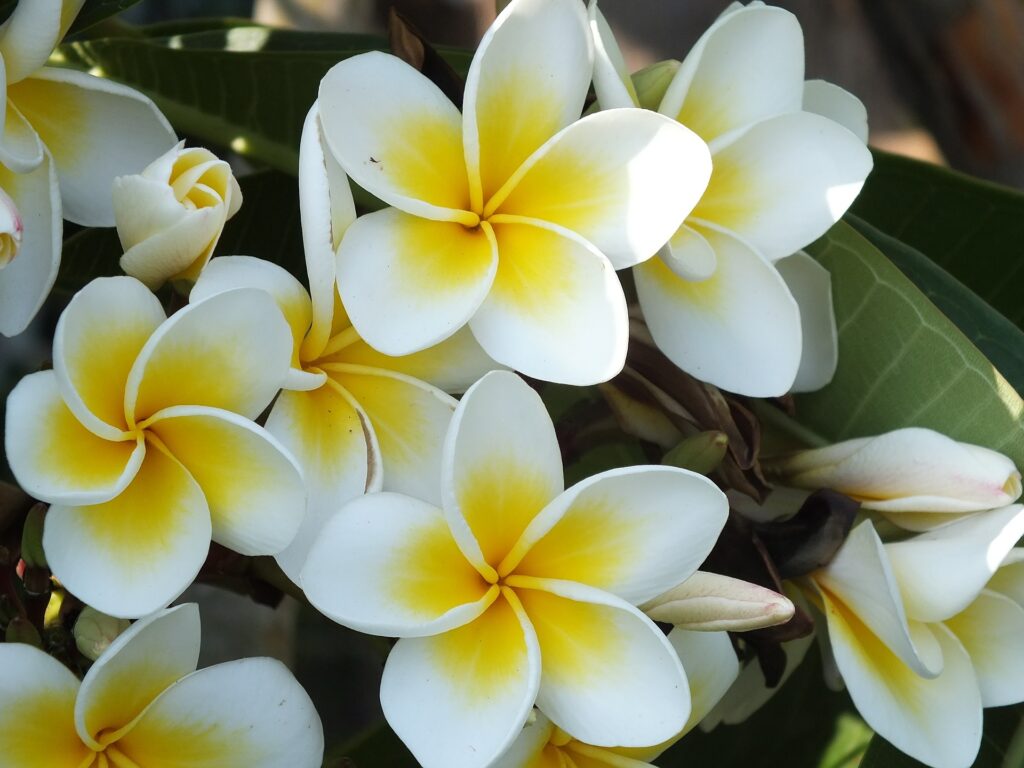History of the Lei
Gifting a flower lei is one of the most recognizable floral traditions, even for those who have never been to Hawaii. The custom was brought to the island chain by the ancient Polynesians, who navigated across the ocean in sailing canoes to settle there. With them they brought the art of adorning their bodies with strings of flowers and vines, a practice common throughout the South Pacific. The tradition grew in variety and richness in the Hawaiian Islands, with a fascinating history surrounding it.
The first thing to know is that the correct plural form of “lei” is also “lei,” although in colloquial usage many people refer to multiple lei as “leis.” Second, although most people think of a floral garland when they envision a lei, lei can also be made of nonperishable materials as well, such as shells, nuts, feathers, or whale bone. The variety of Hawaiian lei expanded from the 1300s to about 1778, a period of time when the Polynesian people ceased making the long ocean voyages that connected Hawaii to other Pacific island communities. In that period of isolation from contact with the outside world, Hawaiian culture flourished with its own unique rituals and traditions, including beautiful lei.
Lei were worn by ancient Hawaiians to beautify and distinguish themselves from others. While we might associate these beautiful garlands with special occasions, lei were worn by commoners and chiefs for both everyday tasks and celebrations. Certain lei, however, had special meaning. One of the most important was the Maile lei, named for the green Maile vine out of which it is made, used to signify a peace agreement between two opposing chiefs. The kukui nut lei, an example of a lei made of something other than flowers, was reserved for royalty.
Nowadays, lei are used to signify welcome, friendship, appreciation, congratulations, or love. Many visitors to Hawaii kick off their trip with a lei greeting in the airport to get into the island spirit. Modern Hawaiians gift lei to one another on all kinds of important events, including birthdays, graduations, weddings, and religious ceremonies. This joyous tradition has caught on in the mainland as well, becoming a familiar sight at all kinds of celebrations. Popular flowers for modern lei include orchids, plumeria, tuberose, or carnations.
For such an ancient tradition, there are relatively few rules that dictate when a lei can be worn—it is almost always acceptable to wear one. However, there are a few customs worth noting:
- The traditional Hawaiian way of wearing a lei is gently draped over the shoulders and hanging down both in front and in back, rather than like a necklace.
- If someone gives you a lei, you should always accept it. Because a lei is always given in affection or as congratulations, it would be rude to turn it down. It’s not unusual for an honoree to end up wearing several at one time!
- It’s considered bad form to remove your lei in front of the person who gave it to you. If you must do so, do it discreetly.
At Rachel Cho Floral Design, we know that flowers express our deepest emotions in all kinds of cultures and celebrations. We delight in bringing inspiring designs and the best flowers of every season to the meaningful moments in our clients’ lives. For professional, personalized help with all of your floral needs, contact us today.
